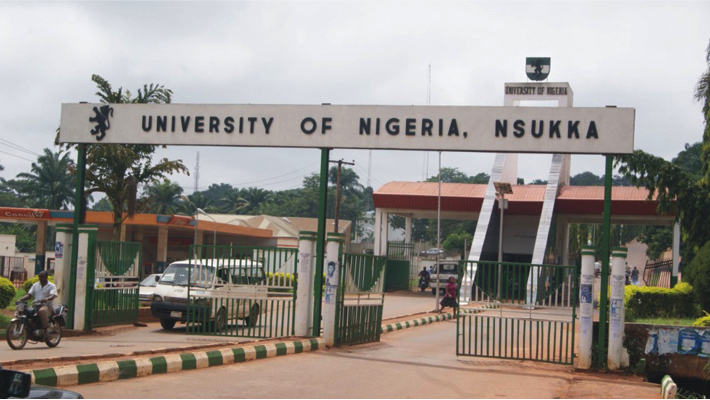In the tranquil village of Chibok in northeastern Nigeria, nestled amidst rolling hills and lush greenery, the sun rose over the horizon on a fateful morning in April 2014. What should have been a day of promise and hope, brimming with possibilities for young minds, swiftly turned into a nightmare. On that day, Boko Haram militants stormed the Government Secondary School, abducting 276 innocent schoolgirls, thrusting the world into disbelief and outrage.
This grim incident was not an isolated one. For many children living in regions plagued by conflict, education has become a luxury they can scarcely afford. The ‘International Day to Protect Education from Attack,’ observed on September 9, serves as a stark reminder that education remains under siege in Nigeria and other areas worldwide where armed bandits, terrorists, and emergency situations threaten the sanctity of classrooms.
Education stands as an inherent human right. Amidst crises, children and young individuals, encompassed by emergency situations, find in education not just a continuation of their learning, but also a semblance of normalcy and a gateway to an altered destiny, emphasises the United Nations Educational, Scientific and Cultural Organisation (UNESCO).
Armed with knowledge, skills, and the support acquired through education, generations navigate through crises and guide our world towards a sustainable future. This rings particularly true for marginalised groups, including girls, migrants, refugees, and individuals with disabilities, among others.
Educational institutions should ideally serve as sanctuaries for children, students, and educators. Yet, far too frequently, they, and the very spaces that facilitate learning, morph into deliberate targets or unintentional casualties within conflict-ridden settings.
These assaults on education carry grave, enduring physical, and psychological consequences for both students and educators. They disrupt the processes of teaching and learning, contribute to a marked surge in dropout rates, and obstruct students from exercising their rightful access to a high-quality education.
Read also: WISE 2023 will focus on GenAI – Felfoul
A Grim Reality: The Denial of Education
The statistics are disheartening. In Nigeria alone, over 13 million children are out of school, with many in the northeast region directly affected by the Boko Haram insurgency. This heart-wrenching denial of education stems not only from the direct attacks on schools but also from the pervasive fear that permeates these communities.
Parents are reluctant to send their children to school, fearing for their safety. Moreover, the abduction of schoolchildren for ransom has become an all too common tactic, further exacerbating the problem.
Across Africa, this issue is not confined to Nigeria. In Mali, Somalia, South Sudan, and other conflict-ridden nations, countless children are robbed of their right to an education. According to the Global Coalition to Protect Education from Attack, between 2015 and 2019, there were over 11,000 attacks on educational institutions worldwide, jeopardising the futures of countless children.
Learning from Africa’s Success Stories
However, amidst the gloom, there are shining examples of how education can be preserved and even flourish in the most challenging of circumstances. Several African countries have adopted innovative strategies to protect their children’s right to education, despite facing similar threats. Here are a few noteworthy examples.
Community-Driven Protection in Somalia: In Somalia, where conflict and instability persist, some communities have organised local militias to safeguard schools and students. These community-driven protection measures have helped create safe spaces for learning.
Mobile Schools in South Sudan: In war-torn South Sudan, mobile schools have been introduced to reach children in remote areas. These schools are equipped to move when security conditions deteriorate, ensuring that education remains accessible even in conflict zones.
International Support in Uganda: Uganda, which hosts a significant number of refugees from neighbouring conflict-stricken countries, has received support from international organisations to build and maintain schools in refugee settlements, ensuring that displaced children have access to education.
The Role of Technology in Rwanda: Rwanda has embraced technology as a means to provide education in hard-to-reach areas. Through initiatives like “One Laptop per Child,” students in remote regions are gaining access to quality education resources.
A Call to Action: Safeguarding the Future
To protect education from attack and ensure that children in crisis-affected areas receive the education they deserve, it is crucial for governments, communities, and international organisations to collaborate on multifaceted solutions.
Enhanced Security Measures: Governments must prioritise the safety of schools and students. Deploying security forces to protect educational institutions and ensuring swift responses to attacks are paramount.
Community Engagement: Engaging with local communities and enlisting their support in protecting schools can be highly effective. This approach not only enhances security but also fosters a sense of ownership and responsibility.
Innovative Education Models: Learning from mobile schools and technology-driven initiatives, African countries can adapt creative approaches to deliver education even in challenging circumstances.
International Collaboration: The international community must continue to provide financial and logistical support to countries grappling with education under attack. Partnerships with global organisations and neighbouring nations can be invaluable.
The ‘International Day to Protect Education from Attack’ serves as an annual reminder of the urgency of this issue. We must not allow conflicts and emergencies to rob an entire generation of their right to education. By learning from successful initiatives across Africa and implementing comprehensive strategies, we can safeguard the future of countless children, empowering them to build brighter, more peaceful tomorrows, even amidst the darkest of times.







 info@edugist.org
info@edugist.org 







